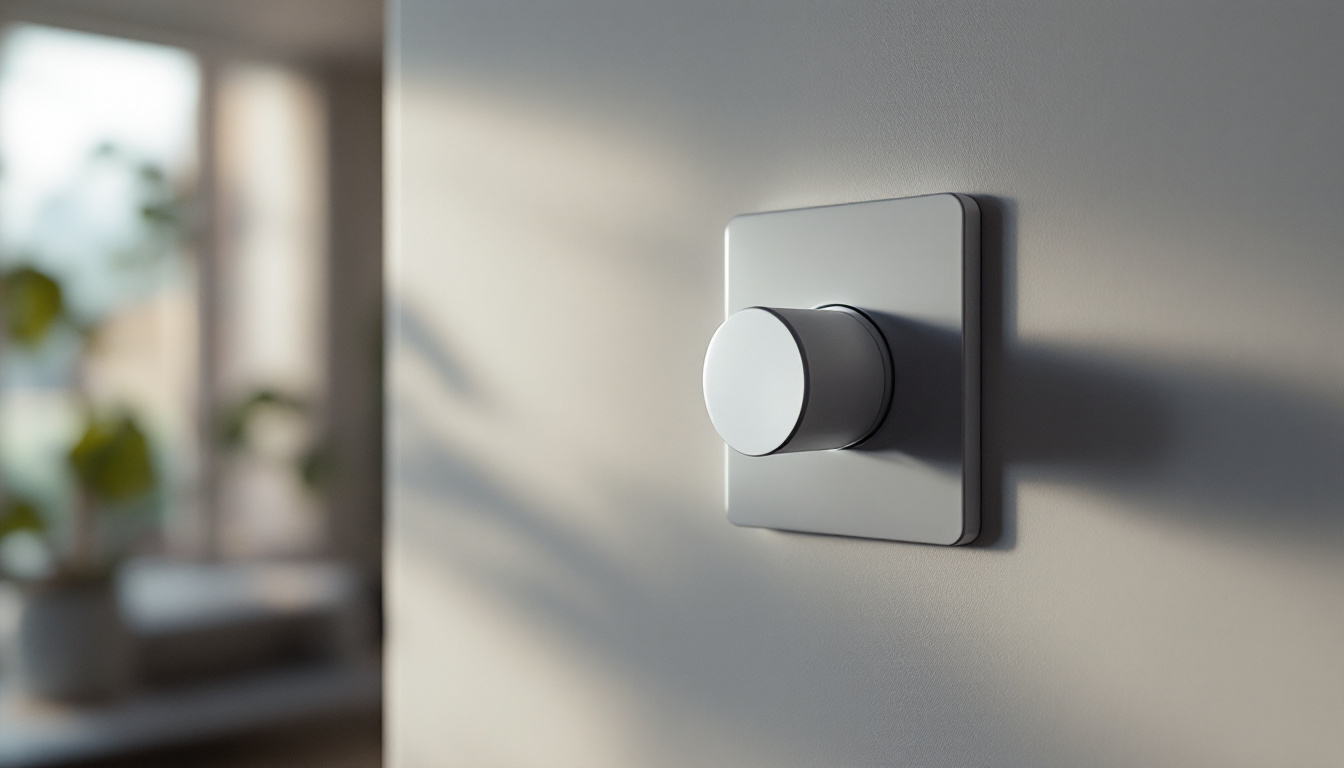

The lighting industry has undergone a remarkable transformation over the years, evolving from simple incandescent bulbs to sophisticated, smart lighting systems. One of the most significant advancements in this field has been the development of dimmer switches, which have revolutionized how lighting is controlled and utilized in residential, commercial, and industrial settings. This article explores the evolution of dimmers, their impact on the lighting industry, and the future trends that are shaping this essential aspect of modern design.
The concept of dimming lights dates back to the early days of electric lighting. Initially, the only way to control brightness was through mechanical means, such as adjusting the voltage or using variable resistors. These early methods were not only cumbersome but also inefficient, leading to significant energy waste.
As the demand for more efficient and user-friendly lighting solutions grew, manufacturers began to explore electronic dimming technologies. These innovations allowed for smoother, more precise control over light levels, paving the way for the modern dimmer switch.
Mechanical dimmers emerged as a significant advancement in the lighting industry. These devices utilized a simple design that allowed users to adjust the brightness of their lights manually. Although they were an improvement over earlier methods, mechanical dimmers often had limitations, such as flickering and reduced bulb lifespan.
Despite these drawbacks, mechanical dimmers laid the groundwork for future innovations. They introduced the concept of adjustable lighting, which became increasingly popular in homes and businesses alike. As technology progressed, manufacturers began to develop more sophisticated electronic dimmers that addressed many of the issues associated with mechanical designs.
Moreover, the rise of interior design trends emphasizing ambiance and mood lighting further propelled the popularity of mechanical dimmers. Homeowners began to recognize the importance of lighting in creating a specific atmosphere, whether it was for a cozy dinner party or an energizing workspace. This shift in consumer perception not only increased sales but also encouraged manufacturers to invest in research and development, ultimately leading to more advanced lighting solutions.
Electronic dimmers marked a significant leap forward in lighting control. These devices use semiconductor technology to regulate the flow of electricity to the light source, providing a smoother and more reliable dimming experience. The introduction of electronic dimmers not only improved performance but also expanded the range of compatible light sources.
With the advent of electronic dimming, users could enjoy features such as remote control capabilities and preset lighting scenes. This versatility made electronic dimmers a popular choice for both residential and commercial applications, allowing for greater customization and energy efficiency.
Furthermore, the integration of smart technology into electronic dimmers has transformed the way we interact with lighting in our spaces. Smart dimmers can be controlled via smartphone apps, voice commands, or even programmed to respond to specific times of day or occupancy. This level of automation not only enhances convenience but also contributes to energy savings, as lights can be dimmed or turned off when not in use. As a result, the evolution of dimming technology continues to shape our environments, making them more adaptable and responsive to our needs.
The emergence of smart technology has further transformed the lighting industry, leading to the development of smart dimmers that integrate seamlessly with home automation systems. These devices allow users to control their lighting through smartphones, tablets, or voice commands, providing unparalleled convenience and flexibility.
Smart dimmers not only enhance user experience but also promote energy conservation. By enabling users to adjust lighting levels based on their needs, smart dimmers help reduce energy consumption and lower utility bills. This shift towards energy-efficient solutions aligns with the growing emphasis on sustainability in the lighting industry.
One of the most significant benefits of smart dimmers is their ability to integrate with various home automation systems. This integration allows users to create customized lighting schedules, set scenes for different activities, and even control their lights remotely. As smart home technology continues to evolve, the demand for compatible lighting solutions is expected to grow.
Moreover, the ability to synchronize lighting with other smart devices, such as thermostats and security systems, enhances overall home efficiency and security. This interconnectedness represents a new frontier in lighting design, where convenience and functionality go hand in hand.
The lighting industry is increasingly prioritizing energy efficiency and sustainability, and smart dimmers play a crucial role in this shift. By allowing users to adjust brightness levels, these devices help minimize energy waste and reduce carbon footprints. This focus on sustainability is not just a trend; it reflects a broader societal commitment to environmental responsibility.
In addition to energy savings, many smart dimmers are designed to work with LED and CFL bulbs, which are inherently more energy-efficient than traditional incandescent bulbs. As more consumers and businesses transition to these eco-friendly lighting options, the role of dimmers in promoting energy efficiency becomes even more critical.
In commercial settings, the importance of lighting cannot be overstated. Effective lighting design can enhance productivity, create ambiance, and improve the overall experience for customers and employees alike. Dimmers play a vital role in achieving these goals, offering flexibility and adaptability in various environments.
From retail spaces to offices, the ability to adjust lighting levels can significantly impact the atmosphere and functionality of a space. For instance, in a retail environment, dimmers can create a warm and inviting atmosphere, encouraging customers to linger and explore. In contrast, in an office setting, brighter lighting may be necessary to promote focus and productivity during working hours.
In the competitive world of retail, creating a memorable customer experience is essential. Dimmers allow retailers to adjust lighting to highlight products effectively, creating an inviting atmosphere that encourages purchases. By strategically using dimming techniques, retailers can influence customer behavior and enhance the overall shopping experience.
Moreover, the ability to change lighting levels throughout the day can help maintain a consistent brand image. For example, a coffee shop might use warmer, softer lighting in the morning to create a cozy ambiance, while transitioning to brighter, more energizing lighting in the afternoon to accommodate a bustling crowd.
In office environments, the impact of lighting on employee productivity is well-documented. Studies have shown that well-lit spaces can enhance focus, reduce fatigue, and improve overall job satisfaction. Dimmers allow for the customization of lighting levels, enabling employees to create an environment that suits their individual needs.
Adjustable lighting can also help mitigate the effects of glare and harsh lighting, creating a more comfortable workspace. By providing employees with control over their lighting, businesses can foster a more positive and productive work environment, ultimately leading to improved performance and employee retention.
As technology continues to advance, the future of dimming technology holds exciting possibilities. Innovations in LED technology, wireless communication, and artificial intelligence are set to redefine how lighting is controlled and experienced.
One of the most promising trends is the integration of artificial intelligence into smart dimmers. AI-powered systems can learn user preferences and automatically adjust lighting levels based on time of day, occupancy, and even individual moods. This level of personalization represents a significant leap forward in user experience, making lighting more intuitive and responsive.
The rise of wireless communication technologies is also influencing the evolution of dimmers. With the proliferation of Wi-Fi and Bluetooth-enabled devices, users can control their lighting from virtually anywhere. This convenience not only enhances user experience but also opens up new possibilities for remote monitoring and management of lighting systems.
As wireless technology continues to improve, the potential for integration with other smart home devices will expand. This interconnectedness will allow for even greater customization and automation, further enhancing the appeal of smart dimmers in both residential and commercial applications.
As the lighting industry evolves, there is a growing emphasis on user-centric design. Manufacturers are increasingly focusing on creating dimmers that are not only functional but also aesthetically pleasing and easy to use. This shift reflects a broader trend towards personalization in design, where consumers seek products that align with their individual tastes and lifestyles.
Future dimmers may incorporate touch-sensitive controls, customizable interfaces, and even aesthetic elements that complement home decor. By prioritizing user experience, manufacturers can ensure that their products remain relevant and appealing in an ever-changing market.
The evolution of dimmers has significantly impacted the lighting industry, transforming how lighting is controlled and experienced in various settings. From the early mechanical dimmers to the sophisticated smart dimmers of today, advancements in technology have continually improved user experience, energy efficiency, and design flexibility.
As the industry moves forward, the integration of smart technology, wireless communication, and user-centric design will shape the future of dimming solutions. For lighting contractors, staying abreast of these trends is essential to meet the evolving needs of clients and provide innovative solutions that enhance both functionality and aesthetics.
Ultimately, the journey of dimmers reflects a broader narrative within the lighting industry—a commitment to innovation, sustainability, and user satisfaction. As new technologies emerge and consumer preferences evolve, the future of dimming technology promises to be as dynamic and illuminating as the lights it controls.
As you embrace the dynamic future of dimming technology, ensure your projects shine with the best in class lighting solutions from LumenWholesale. We provide contractors with spec-grade lighting products that embody the innovation and sustainability discussed in this article. Our unbeatable wholesale prices, combined with free shipping on bulk orders, guarantee that you get premium lighting without the premium cost. Elevate your lighting game and experience Wholesale Lighting at the Best Value today, ensuring your projects are as bright and efficient as the future they’re built for.

Discover the essential role of parking lights in urban planning and safety.

Discover the advantages and drawbacks of high bay LED light fixtures for lighting contractors.

Discover why purchasing ceiling fans in bulk from local distributors might not be the best decision.

Discover essential insights and expert tips on outdoor lighting that every lighting contractor should know.
Get notified when NEW deals are released.
Optimize your budget with wholesale discounts.
Only top-quality, specification-grade lighting products.
No additional costs at checkout - what you see is what you pay.
We understand the unique needs of contractors.